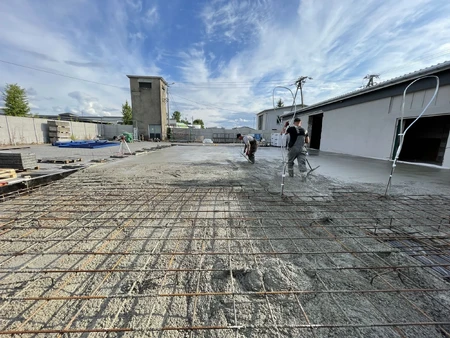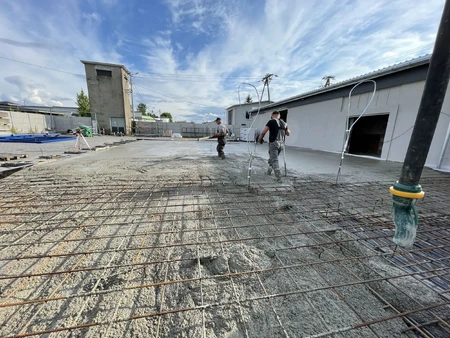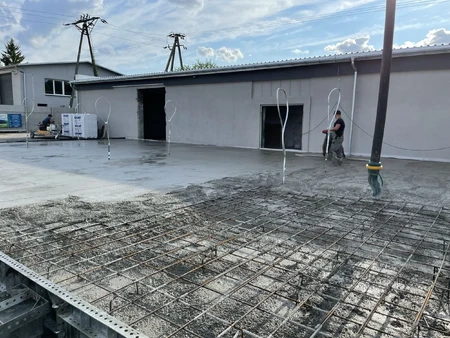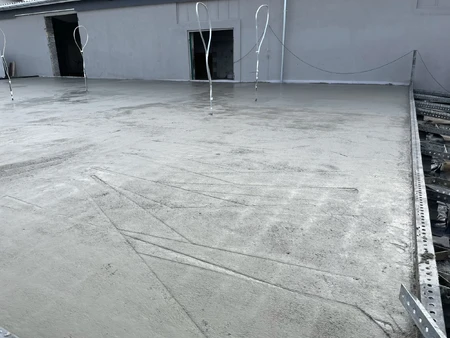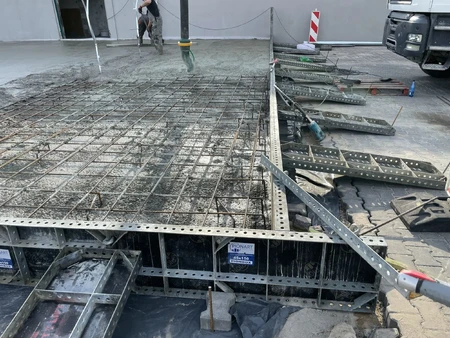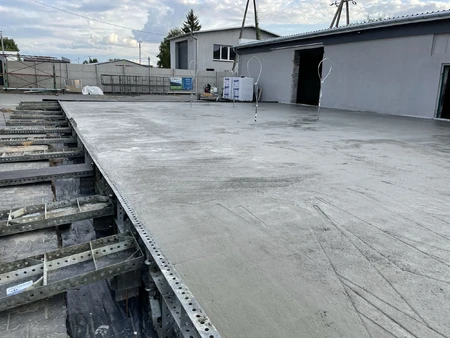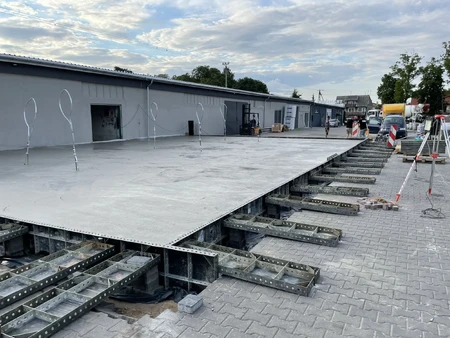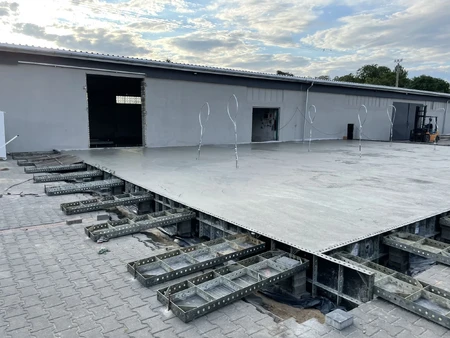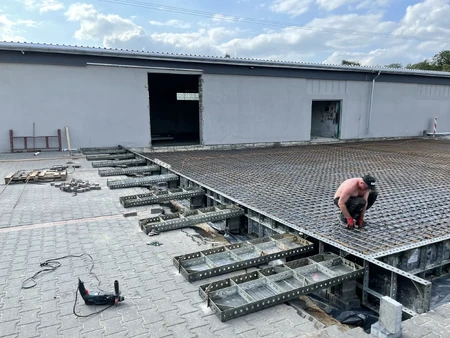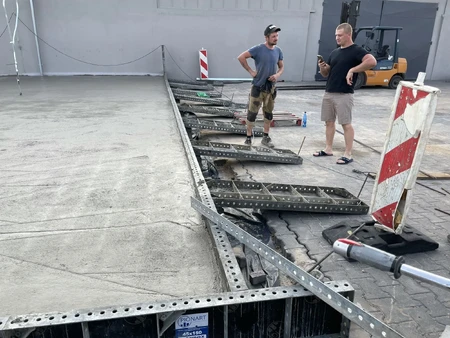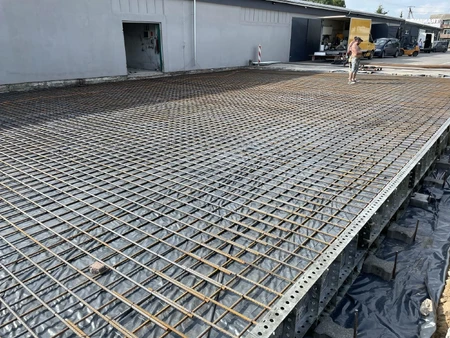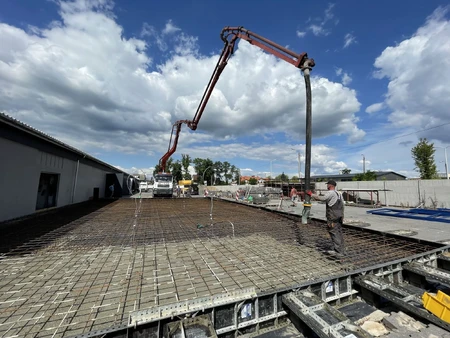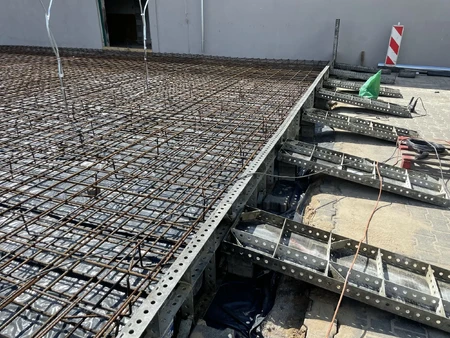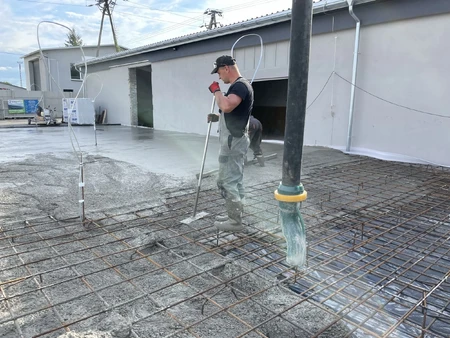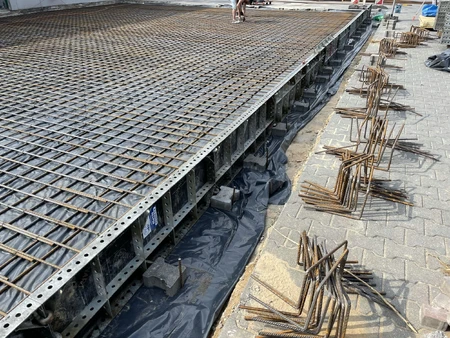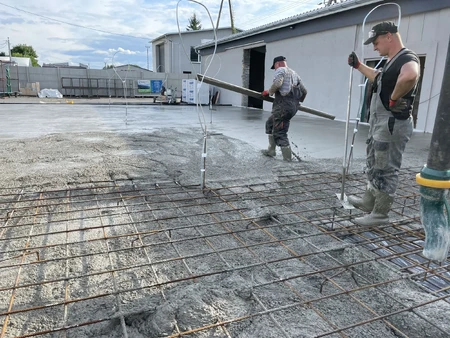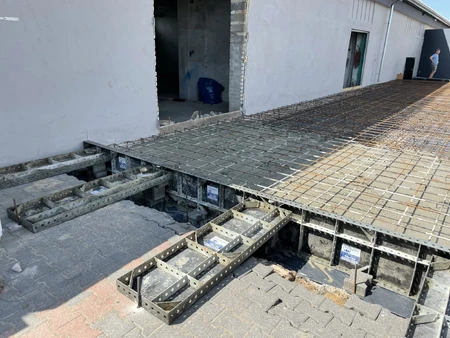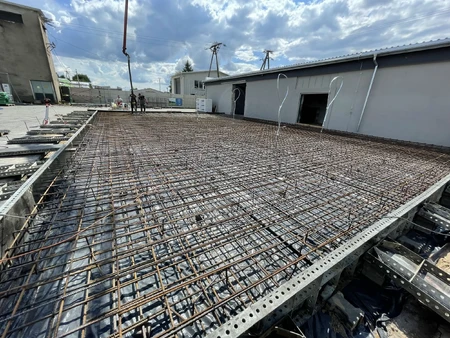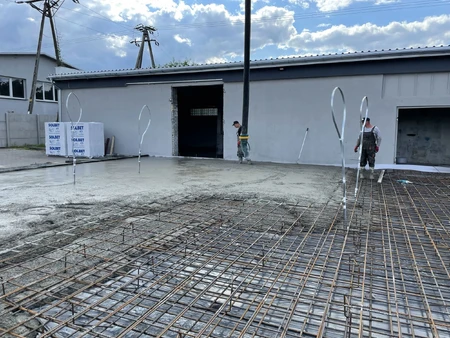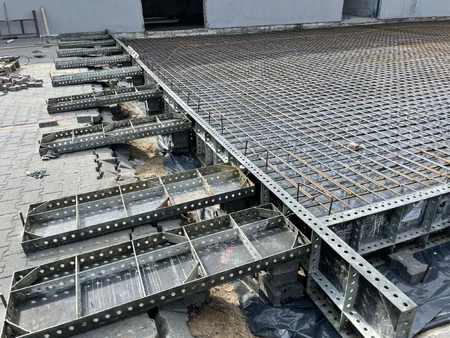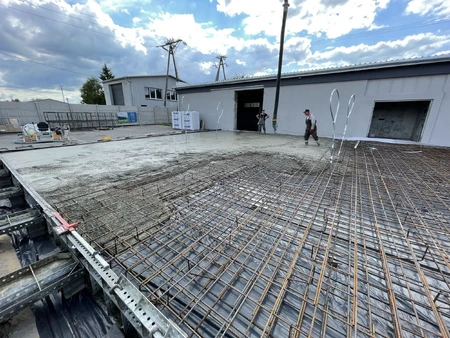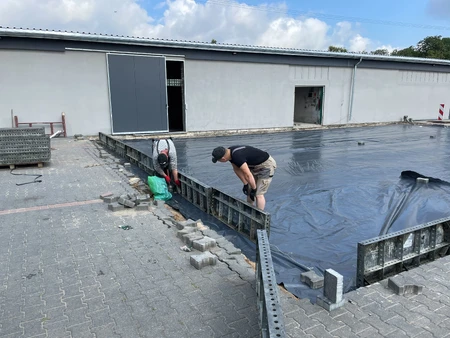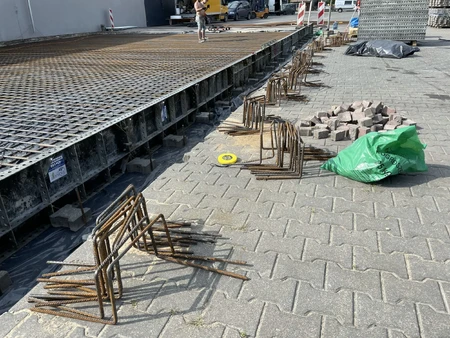What we did on this construction site:
- execution of two-layer reinforcement;
- construction of an industrial concrete floor.
How to calculate how much reinforcement should be designed for an industrial concrete floor?
Designing an industrial floor includes many aspects that determine its quality and longevity.
One of the most important is definitely the use of the right amount of reinforcement. Reinforcement, also called reinforcing steel or steel mesh, is used in construction to increase the strength of industrial concrete floor to various loads and prevent cracking and damage.
The following steps will help you calculate how much reinforcement your industrial concrete floor needs. Check the loads that will affect the floor. It is important to take into account the different loads that will affect the floor. These may be, for example, operational loads such as machinery and equipment, dynamic loads such as vehicle traffic, thermal loads and possible loads on the storage space.
Calculate the shear force. The shear force is the part of the load that acts perpendicular to the surface of the industrial concrete floor. This is important to determine the appropriate reinforcement thickness.
Choose the right type of reinforcement to avoid repairing floors. The appropriate type of reinforcement depends on the type of load and the requirements of the specific space. Due to different dimensions and shapes, different types of reinforcing mesh are available.
Consult a structural expert. Without appropriate technical knowledge, it is difficult to accurately calculate the required amount of reinforcement. Therefore, it is always worth consulting an experienced structural engineer or a company specializing in the construction of industrial concrete floors.
Use the program for structural calculations. There are special programs that will help you calculate the amount and type of reinforcement needed for an industrial floor. These programs take into account various factors such as the type of load, the type of concrete, the thickness of the industrial concrete floor, as well as the type and amount of reinforcement.
Designing an industrial concrete floor with the appropriate amount of reinforcement is necessary to ensure its durability and safety of use. Taking into account the specific loads and selecting appropriate reinforcement, you can significantly increase the strength of the floor and its resistance to cracks and deformations. Be sure to consult with an experienced structural engineer or use dedicated software to help you with accurate design and calculations.
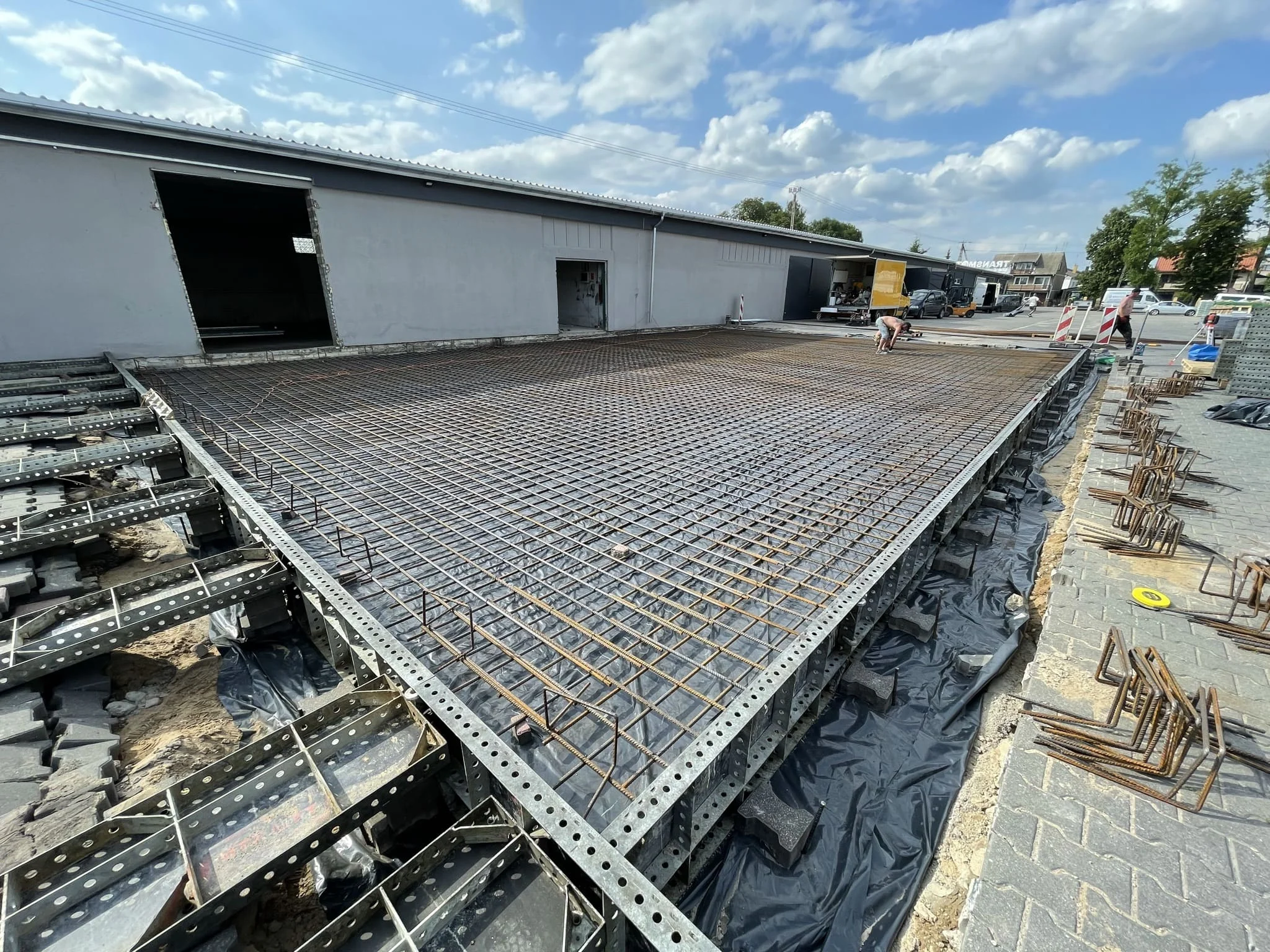
How does reinforcement affect the durability of an industrial concrete floor?
Reinforcement is a key element in the construction of industrial concrete floors, contributing to their durability and strength.
Without proper reinforcement, an industrial concrete floor may be susceptible to cracks, deformations and, as a result, a shorter service life. Understanding how reinforcement affects the durability of an industrial concrete floor helps in the proper design and construction of such a floor.
Increased tensile strength. Polished concrete is a material with excellent resistance to compressive loads, but is weak in tension. Reinforcement, typically made of steel, adds the ability to resist tensile forces to the concrete, significantly increasing its overall strength.
Reduction of cracks. Under the influence of loads and temperature fluctuations, industrial concrete floor may crack. Reinforcement reduces the formation of cracks by distributing stress forces around itself, thereby maintaining the integrity of the structure.
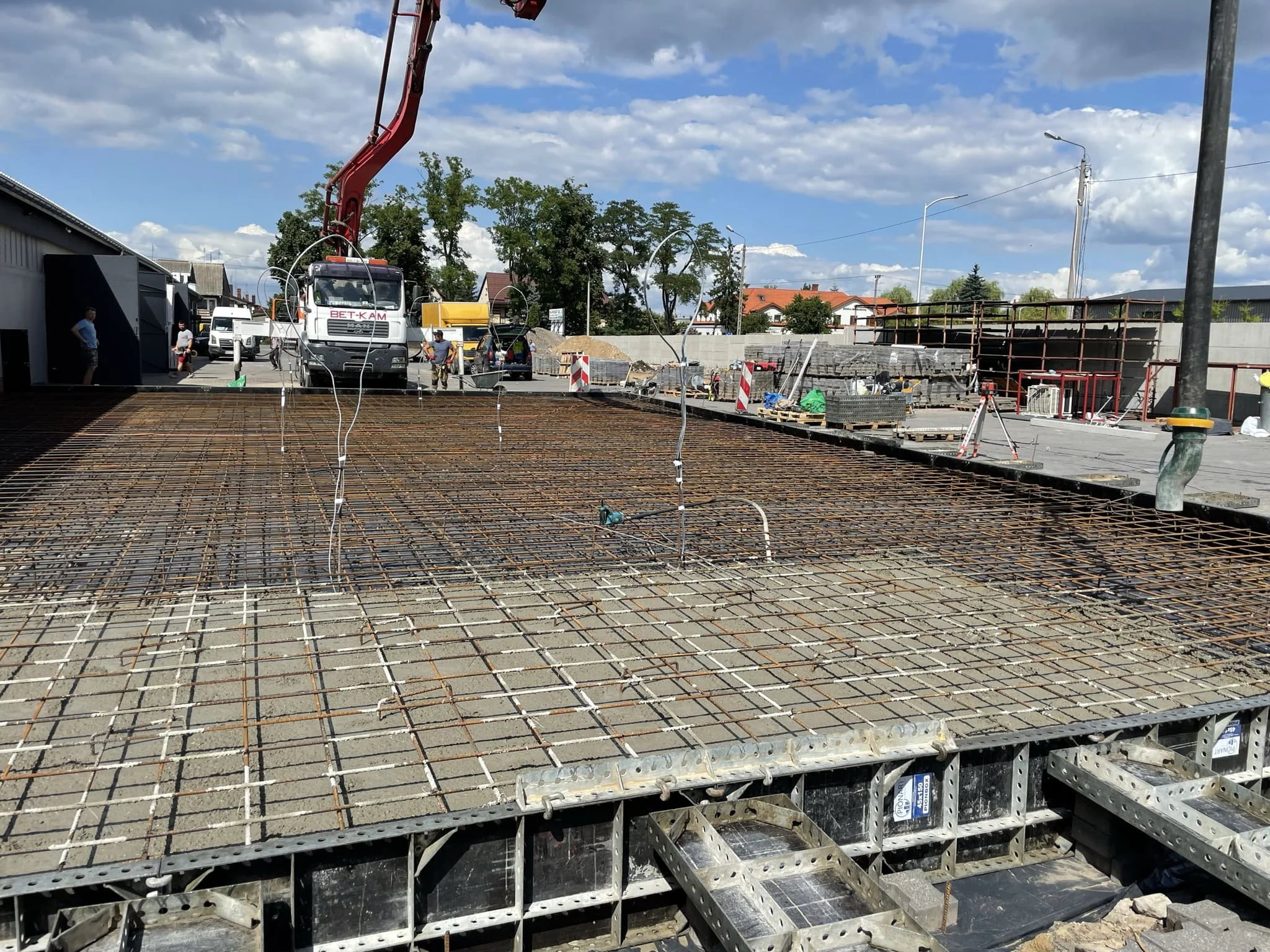
Increased resistance to impacts and dynamic loads. Industrial concrete floors are often exposed to heavy loads, including impacts and heavy equipment. Reinforcement improves the floor's resistance to such loads, protecting it from damage and premature wear.
Increased durability by shrinkage control. Industrial concrete floor undergoes a shrinkage process during setting and hardening, which may lead to cracks and other damage. Reinforcement helps control concrete shrinkage, thereby preventing structural damage.
Increasing the service life of the floor. Resin floors laid on a reinforced concrete base are generally more resistant to damage, which means they require less repairs and maintenance, which in turn translates into a longer service life operation.
We can therefore see that pattern reinforcement affects the durability of industrial concrete floors, improving their functionality and extending their service life. Therefore, when planning the construction of such a floor, it is a good idea to consult an experienced construction engineer or designer to adapt the appropriate type and amount of reinforcement to the specific requirements of the floor.
The durability of walls in a warehouse or production room is also influenced by safety barriers, which should not be forgotten.
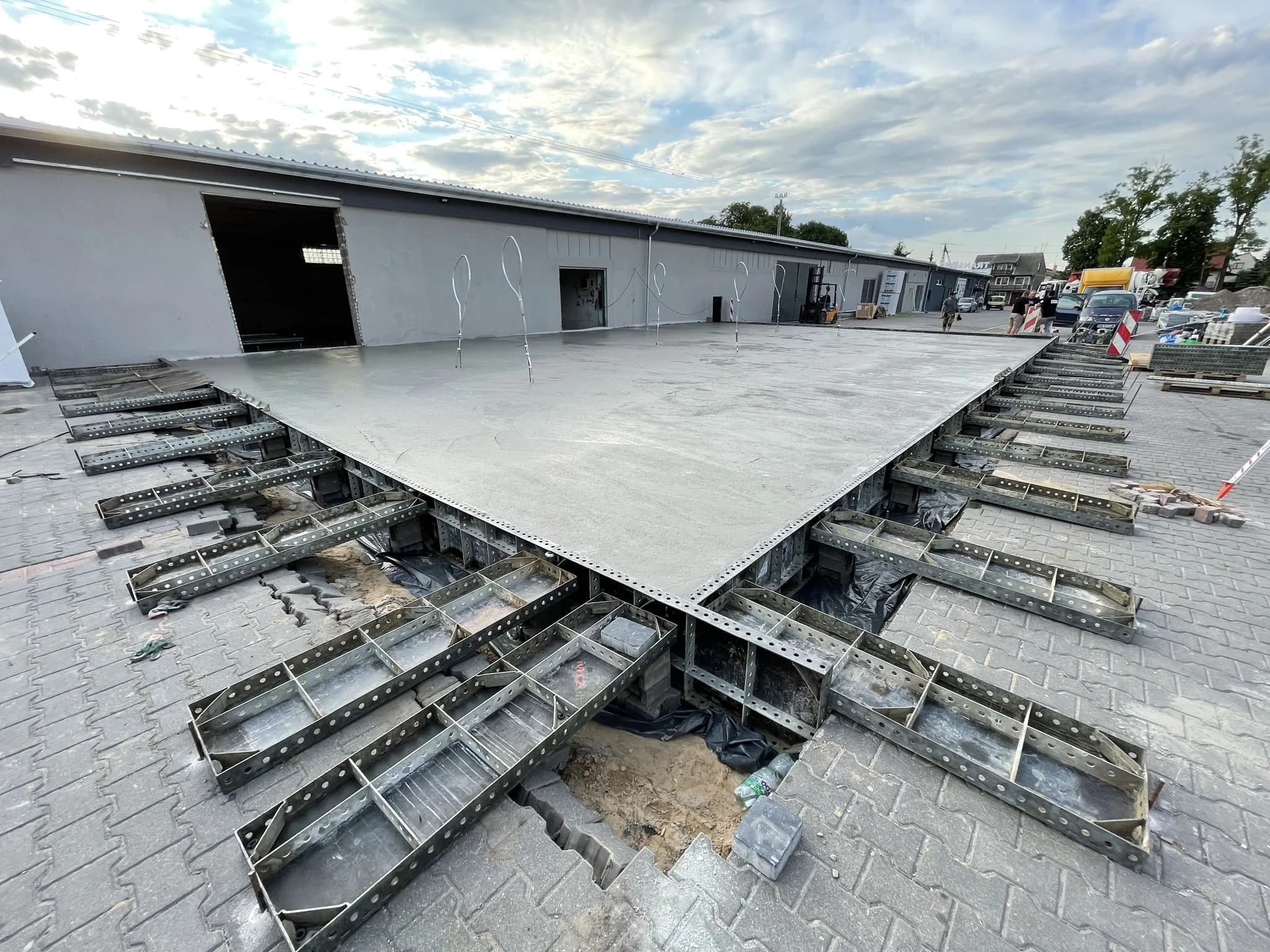
Work results:
- execution of two-layer reinforcement - 400 m2;
- construction of an industrial concrete floor - 400 m2.


